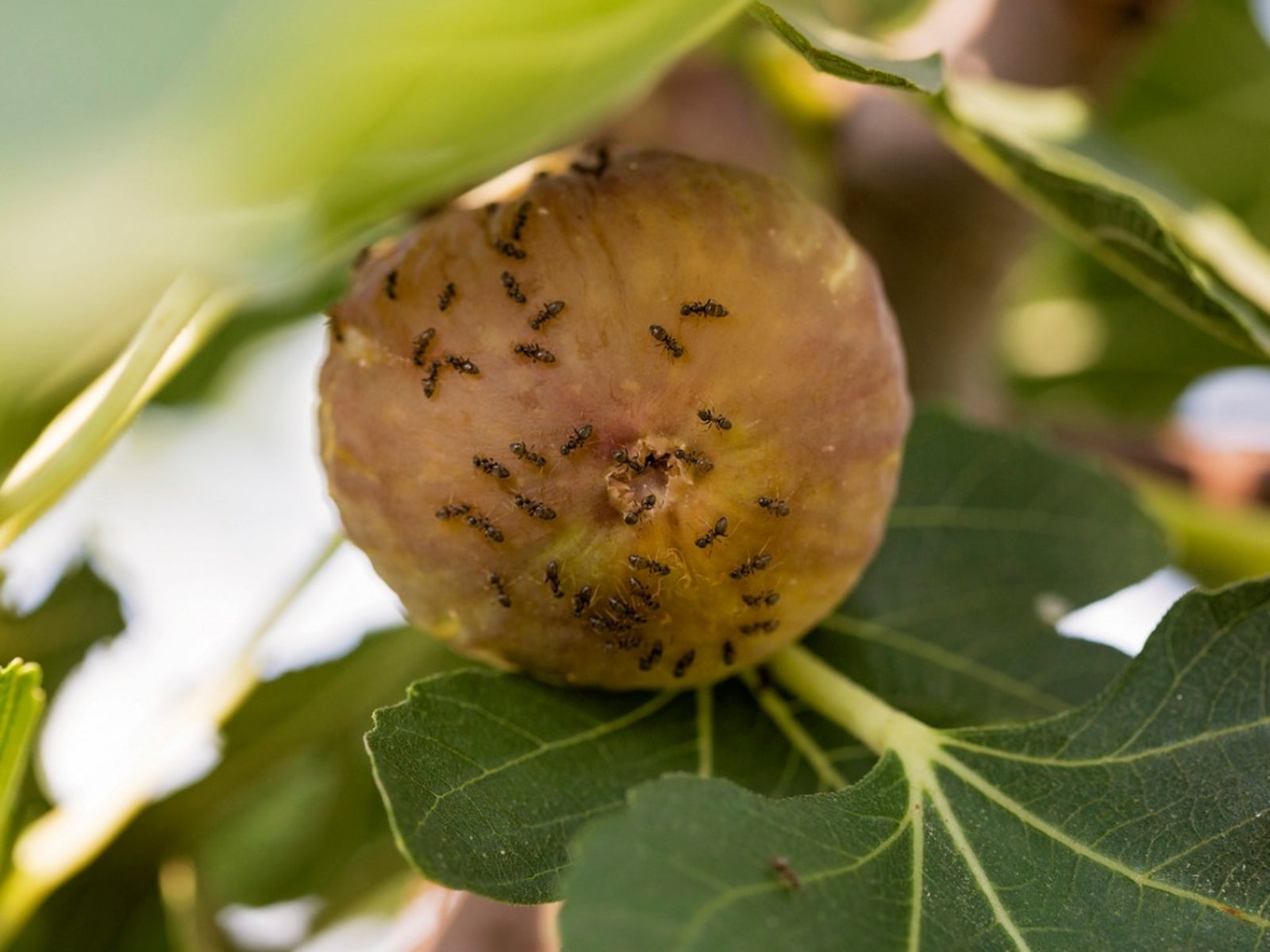Fig Tree Ants: How To Keep Ants Off Fig Trees

Many fruit trees are invaded by ants, but ants on fig trees can be especially problematic because many types of figs have an opening through which these insects can readily enter and spoil the fruit. Learn more about controlling ants in fig trees in this article.
Reasons for Fig Tree Ants
Botanically speaking, fig is not exactly a fruit; it is a special structure called synconium, which protects a bunch of tiny flowers that are arranged within its cavity. There is a small opening called ostiole, or eye, through which wasps enter the chamber inside and fertilize the flowers. When the fig is ripe, other insects (including ants) also enter the fruit through this opening to take a free meal. Figs need to be ripened on the tree because they stop sugar conversion once plucked. Fig tree ripening is often accompanied by the oozing out of a drop of sweet nectar through the eye. Modern cultivars have been developed to do away with fertilization and they have closed eyes. However, that does not keep ants off fig trees. You may find ants in fig trees that are not bearing any fruits. If you observe closely, you'll find colonies of aphids and other soft-bodied pests on the tender branches and under the leaves of the fig tree. The fig tree ants are farming these insects to harvest honeydew, so the first step in protecting fig trees from ants is to protect them from honeydew-secreting insects. Ants often carry aphids from other plants that harbor them; they protect aphids from their natural enemies too. Measures to control ants in fig trees involve restricting their movement to and from the trees. Chemicals can effectively control aphids and ants, but they are better avoided in fruit trees. Any day, natural control measures are preferable to chemical control.
Controlling Ants in Fig Trees
Here are some eco-friendly and non-toxic tips to prevent ants from colonizing your fig tree and spoiling your fig crop:
- Clean the area around the fig tree of all debris - Keeping the a few feet around the tree spotlessly clean will help you observe ant movements so that you can take protective measures immediately.
- Spray the fig tree with water - Use a powerful water jet to dislodge aphids, whiteflies and mealybugs from the trees. Keep at it for several days in a row and ensure that the tree as well as the ground around remains wet. It may persuade the ants to look for another host for its farming operations. Neem oil will also help get rid of the honeydew secreting insects.
- Remove plants and trees that serve as hosts to honeydew insects and ants - Look for aphid infestation and ant colonies in your yard and destroy the host plants.
- Introduce mechanical barriers - Chalk powder or diatomaceous earth may be spread around the base of the fig tree to create a mechanical barrier. The latter can destroy ant colonies when ants carry the sharp pieces home.
- Install traps for ants - Mechanical traps for ants include sticky materials such as petroleum jelly or Tanglefoot. Tie a band of tape around the tree and smear the sticky material. You may have to observe the movement of the ants and replenish the sticky barrier once every week or so. Biological traps can be made with edible material that will kill the ants on ingestion. Powdered sugar mixed with boric acid powder or cornmeal can kill the ants that eat it.
- Plant a circle of ant-repelling plants around the fig tree - Odoriferous plants like geranium, chrysanthemum and garlic are known to repel ants. Make protective cordon around the tree with these plants.
With early intervention and constant diligence, you can keep ants away from the fig tree without resorting to chemical sprays.
Gardening tips, videos, info and more delivered right to your inbox!
Sign up for the Gardening Know How newsletter today and receive a free copy of our e-book "How to Grow Delicious Tomatoes".
-
 Looking For Plants To Give You The Soft And Fuzzies? Try These 5 Fuzzy Leaf Plant Options
Looking For Plants To Give You The Soft And Fuzzies? Try These 5 Fuzzy Leaf Plant OptionsLovers of texture, drama, silver foliage and tactile plants will adore these special sensory garden additions. These fuzzy leaf plant options will leave you all aglow
By Susan Albert
-
 Get Ready For A Summer Of Hummers! Grow These Full Sun Hummingbird Plants and Flowers
Get Ready For A Summer Of Hummers! Grow These Full Sun Hummingbird Plants and FlowersIf you’re lucky enough to enjoy a sunny backyard, make sure you are maxing out on your pollinator opportunities and grow these full sun hummingbird plants and flowers
By Tonya Barnett